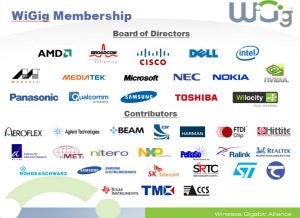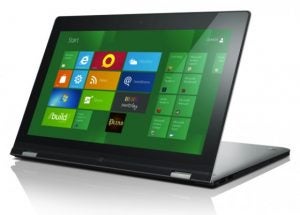Six Technology Breakthroughs Worth Waiting For

WiGig
One technology which does have a locked down standard is WiGig. Designed to complement 802.11ac, WiGig is a short range (think Bluetooth distances) wireless technology which connects automatically to peripherals and has been formally approved by the WiFi Alliance standards agency and backed by almost every major electronics company. Central to WiGig is speed. It can operate at up to 7Gbit (7,000Mbit or 900 megabytes) per second making it ideal for transferring large amounts of data between devices and streaming super high quality video such as 4K HD.

Above and beyond this WiGig has another remarkable trick up its sleeve: it is compatible with the PCI Express bus meaning it can seamlessly harness power (CPU, GPU and memory) from one PC to bolster another. Imagine taking a MacBook Air into the same room as an iMac and getting its performance boost. Better still offices can equip workers with simple, feather light laptops for use on the move which become power packing computational monsters when at their desks.
WiGig is expected to launch in mid/late 2013 and be integrated into phones, tablets and PCs as well as seeing a raft of compatible peripherals. Who wants a PC without 802.11ac and WiGig now? And that’s not the only current omission…
Touchscreen PCs
Windows 8 (itself another impending technology) is perhaps the most radical version of Windows to date and certainly the most advanced. The trouble is its most ambitious introduction, the so-called ‘Modern UI’ (formerly ‘Metro UI’), is so touch centric as to be infuriating to operate with a mouse and keyboard. Consequently Microsoft is telling everyone that a desktop or laptop with a touchscreen is the optimum way to interact the platform. 
Existing PC owners can naturally stick with Windows 7, but those who do upgrade will find the Modern UI within Windows 8 cannot be bypassed. It replaces the start button menu and you’ll be hopping in and out of it all day long. Multitouch desktop monitors already exist, but touchscreen laptops are thin on the ground and those that hit before Christmas will carry a significant premium. After 26 October all new PCs will come with Windows 8, so you might as well give the platform time to get over any early bugs, see how well it integrates with Windows Phone 8 (another impending purchase decision) and wait for those touchscreen monitors and laptops to come down in price.
Never a Good Time to Upgrade
Many a technology cynic will tell you it is never a good time to upgrade and with Windows 8, Windows Phone 8, BlackBerry 10, a new Google Nexus smartphone with Android 4.2, an iPad Mini and Retina Displays for the MacBook Air all expected to arrive over the next few months the cynics might be right.
More to the point, however, this list isn’t about individual gadgets or software updates, but fundamental changes in standards and methods of interaction that will affect technology across the board. If you were to make substantial investments in new hardware without these innovations inside we suspect 12 months down the line you’ll regret it…


